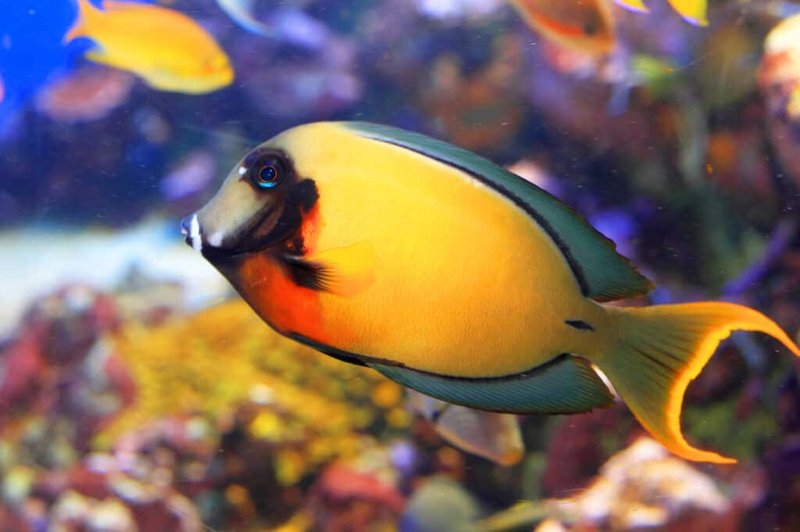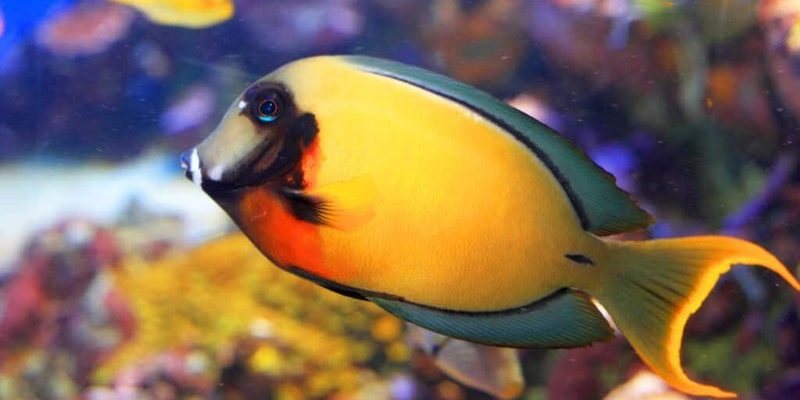
Tangs belong to the family Acanthuridae, and they’re often recognized for their unique shapes and dazzling colors. You might have seen them in popular movies or documentaries, but there’s a lot more to these creatures than just their screen time. Here are ten fascinating tidbits about tangs that will make you appreciate them even more.
1. Tangs Have Unique Body Shapes
One of the first things you’ll notice about tang fish is their distinctive body shape. They have an oval, flattened body that helps them navigate quickly through the water. This design isn’t just for looks; it’s functional! Their shape allows them to swim easily among coral and rocks, escaping predators or finding food.
You might compare it to a streamlined sports car, built to cut through air smoothly. Tangs can zip around, showing off their agility, making them look like they’re dancing through the ocean.
2. They Come in Different Colors
Tangs are a feast for the eyes with their stunning color variations. From bright blue to deep yellow, these fish can really pop in any setting. The Blue Tang, famously known from movies like “Finding Nemo,” sports a striking blue body with a black “palette” design. Meanwhile, the Yellow Tang is a bright yellow beauty found mostly in Hawaiian waters.
But why are they so colorful? Well, their bright colors help them communicate with each other. In the crowded ocean, where visibility can be tricky, these colors play a vital role in attracting mates and warding off rivals. Each hue serves a purpose, much like a traffic light guiding drivers along.
3. Tangs Are Herbivores
Here’s a fun fact: tangs are primarily herbivores! That means they munch on a diet mainly consisting of algae and seaweed. They’re like the gardeners of the ocean, helping maintain the health of coral reefs by keeping algae growth in check.
Imagine going to a restaurant where the menu is filled with salads and greens; that’s essentially how tangs dine. Their specialized teeth are perfect for grazing on plants, which is why you’ll often find them nibbling away on rocks and coral surfaces. This diet also means they play an essential role in their ecosystem, helping to keep things balanced.
4. They Have a Protective Spine
Did you know that tangs come equipped with a built-in defense mechanism? Right at the base of their tail, they have a sharp spine that can be quite dangerous if they feel threatened. It’s akin to carrying a little sword — if a predator gets too close, the tang can swing around and use that spine for protection.
While they’re generally peaceful fish, it’s good to have this defense in their back pocket. Think of it as their way of saying, “I’m not to be messed with!”
5. Tangs are Social Fish
Tangs are not just beautiful; they’re also social creatures. They often live in groups or schools, swimming together and displaying their vibrant colors. This social behavior helps them feel safe from predators. Much like friends sticking together in a crowd, these fish rely on one another for protection.
In an aquarium setting, keeping a few tangs together can help mimic their natural environment. You might notice them interacting playfully, darting around and even engaging in synchronized swimming. It’s like watching a ballet right in your living room!
6. They Can Change Colors
Some species of tangs can actually change their skin color based on their mood or environment. It’s like having a wardrobe that adjusts to fit the occasion! For instance, a stressed tang might appear darker, while a happy one can brighten up, showcasing its beautiful patterns.
This ability to change color is similar to how a chameleon adapts to its surroundings. It helps tangs blend in or stand out, depending on what they need at the moment. So next time you see a tang, remember, it might just be wearing a different outfit!
7. They Play a Role in Aquarium Maintenance
If you’re an aquarium owner, you’ll love this! Tangs are not just pretty faces—they can help keep your tank clean. Since they primarily eat algae, having a tang in your aquarium can minimize algae buildup, making maintenance a bit easier for you.
You might think of them as little underwater janitors, helping to keep things tidy. However, it’s essential to provide them with adequate space, as these fish are quite active and need room to swim. A well-cared-for tang can be a long-lasting and helpful addition to your aquatic family.
8. Tangs Are Great Swimmers
Tangs are built for speed and efficiency in the water. Their streamlined bodies not only help them navigate but also allow them to make quick turns and rapid movements. You might compare them to race cars on a track, zipping by with agility that’s mesmerizing to watch.
Their powerful tails provide the force needed for fast swimming, which comes in handy when they need to evade predators or compete for food. This athleticism makes them a joy to observe, whether in the wild or in an aquarium setting.
9. They Require Specific Water Conditions
If you’re thinking of adding a tang to your aquarium, it’s crucial to know that they need specific water conditions to thrive. They prefer a slightly higher pH and stable salinity levels, making water quality an essential part of their care.
Just like humans need a comfortable home to live happily, tangs require a well-maintained environment to flourish. Regular water testing and adjustments will be part of your routine. Remember, a happy tang is a healthy tang!
10. They Have Interesting Behaviors
Tangs are not just swimming around aimlessly; they exhibit various behaviors that can be fascinating to watch. They often engage in playful chasing, especially when they’re young. This playful behavior helps them socialize and establish hierarchy within their groups.
Additionally, they’ll often engage in cleaning behaviors, where they allow smaller fish to nibble on parasites and dead skin. It’s a symbiotic relationship where both parties benefit, akin to going to a spa day together!
As you can see, tang fish are more than just attractive additions to an aquarium or ocean. Their unique traits, behaviors, and roles in their ecosystem make them a captivating subject for anyone interested in marine life. Each tang tells a story, whether swimming gracefully in the ocean or brightly flashing through your aquarium. Understanding these amazing creatures can deepen your appreciation for the vibrant underwater world they call home.

